Introduction: Why Safe Deposit Box Size Matters
When it comes to safeguarding your most prized possessions, dimensions aren’t just a detail—they’re the difference between peace of mind and a logistical headache. Picture this: you’ve secured a storage unit for your valuables, only to find your family treasures don’t fit, or worse, you’re overpaying for unused space. Selecting the correct dimensions isn’t just about capacity; it’s about balancing security, affordability, and practicality.
Opting for the wrong dimensions can leave you exposed—overstuffed units risk damaging fragile items, while excessively large ones waste money. Whether you’re protecting delicate jewelry, irreplaceable paperwork, or rare collections, the size of your storage solution plays a critical role in keeping your items safe and accessible. In this guide, we’ll help you navigate the options to find the ideal fit for your belongings, ensuring your valuables are both secure and easy to access. Let’s dive in.
What Is a Safe Deposit Box?
A safe deposit box is a secure container, typically housed within a bank or private vault, designed to protect your most important items from theft, fire, or other risks. These containers are often made of durable materials like steel and are stored in highly secure facilities with advanced surveillance and access controls. Renting one provides an extra layer of protection for belongings that are too valuable or irreplaceable to keep at home.
Common uses for these storage units include safeguarding jewelry, critical documents like wills and property deeds, rare collectibles, and even digital backups on USB drives. They’re also ideal for storing items you don’t need frequent access to but want to keep protected, such as family heirlooms or sentimental keepsakes. Whether you’re looking to shield financial assets or preserve cherished memories, a safe deposit box offers a reliable solution for long-term security.
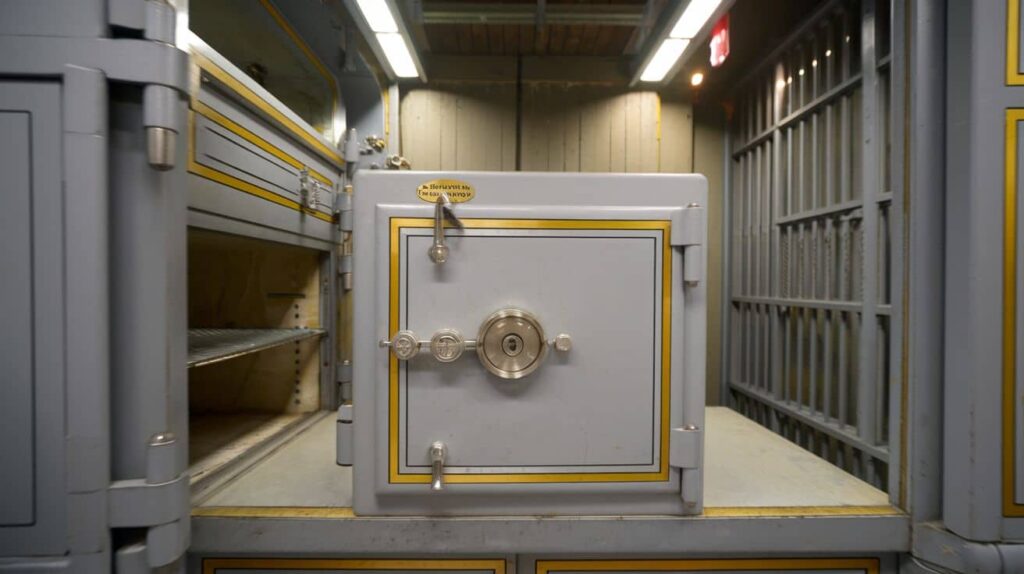
Common Safe Deposit Box Sizes
When it comes to choosing a secure storage solution, size matters. Most facilities offer a range of options, typically categorized as small, medium, and large. Small units, often around 3” x 5” x 24”, are perfect for holding essentials like jewelry, passports, or a stack of important papers. Medium-sized containers, usually measuring 5” x 10” x 24”, provide more room for items such as cash, smaller collectibles, or multiple folders of documents. For those with bulkier needs, large compartments, averaging 10” x 10” x 24”, can accommodate photo albums, larger heirlooms, or even small electronics.
In addition to these standard options, many providers also offer mini boxes. These compact units, often as small as 2” x 5” x 12”, are ideal for individuals who only need to store a few high-value items, like a single piece of jewelry or a small stack of critical paperwork. Mini boxes are a cost-effective choice for those who want maximum security without paying for unnecessary space. Whether you’re storing a handful of valuables or an entire collection, understanding these dimensions ensures you select the right fit for your needs.
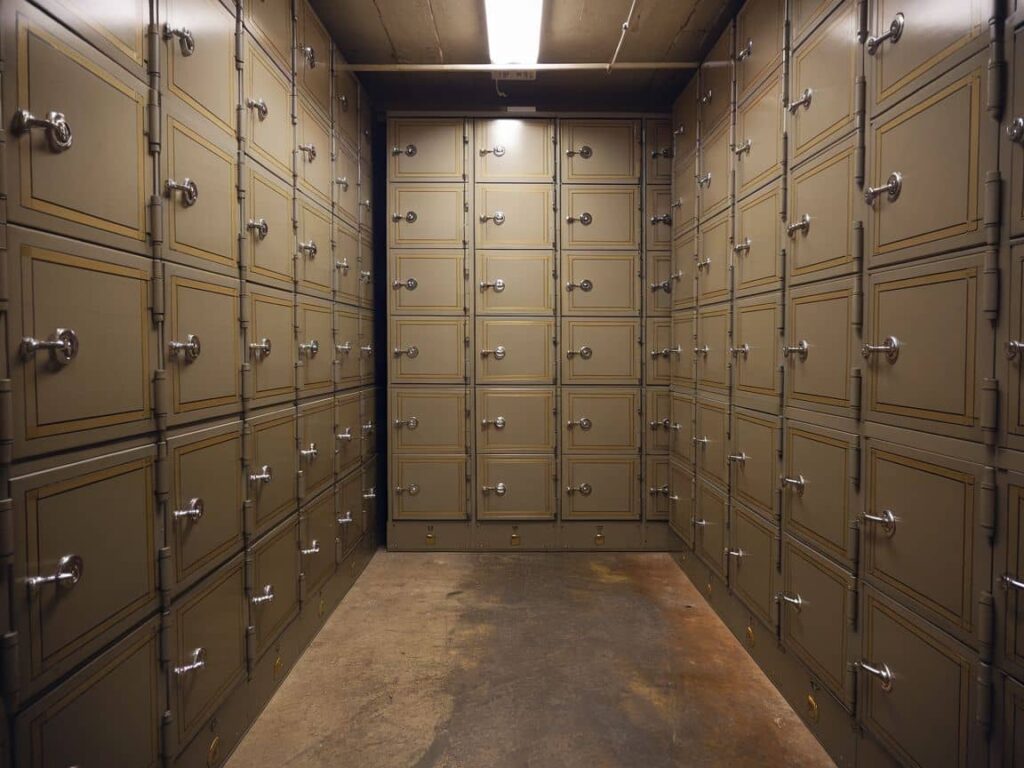
Small Safe Deposit Boxes: Ideal for Essentials
Small storage units are a popular choice for individuals looking to protect their most critical items without needing excessive space. Typically measuring around 3” x 5” x 24”, these compact containers offer enough room to hold essentials like jewelry, passports, birth certificates, and small valuables such as USB drives or rare coins. Their modest size makes them perfect for those who prioritize security for a limited number of high-priority items.
What Fits Inside:
- Jewelry: Rings, necklaces, watches, and other precious accessories.
- Important Documents: Wills, property deeds, insurance policies, and contracts.
- Small Valuables: Cash, collectible coins, or even small family heirlooms.
Pros and Cons of Choosing a Small Unit:
Pros:
- Cost-Effective: Smaller units are often the most affordable option.
- Efficient Use of Space: Ideal for those with minimal storage needs.
- Easy to Organize: Limited space encourages better organization of items.
Cons:
- Limited Capacity: Not suitable for bulkier items or larger collections.
- Potential Overcrowding: Overloading can make it difficult to access items quickly.
For those with straightforward storage needs, a small safe deposit box offers a practical and budget-friendly solution. However, it’s essential to assess your requirements carefully to ensure the size aligns with what you plan to store.
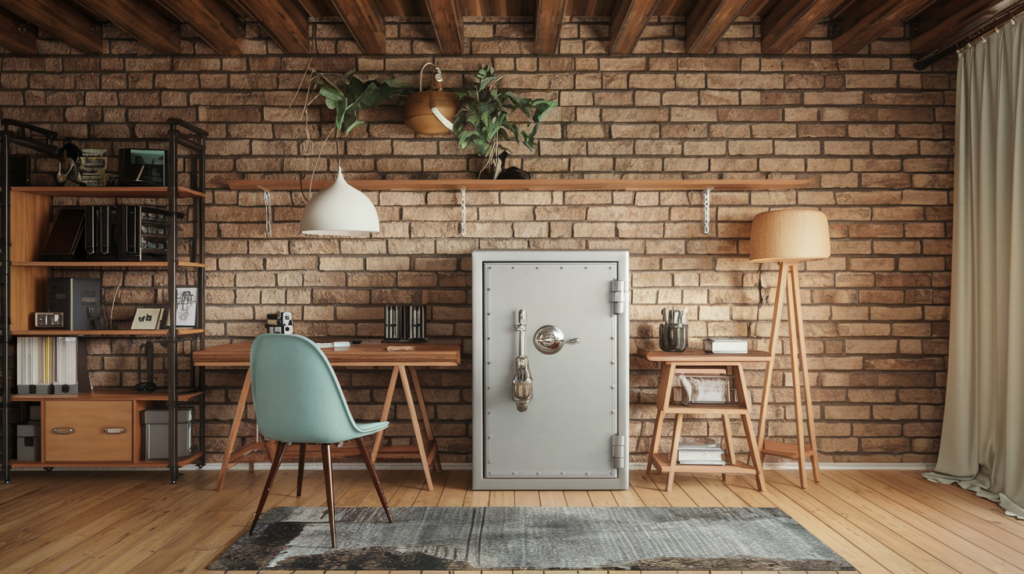
Medium Safe Deposit Boxes: The Versatile Choice
Medium-sized storage units strike a balance between space and affordability, making them a versatile option for many individuals. Typically measuring around 5” x 10” x 24”, these containers offer ample room for a wider variety of items compared to their smaller counterparts. Whether you’re looking to store cash, important paperwork, or sentimental keepsakes, a medium-sized unit provides the flexibility to accommodate diverse needs.
What Fits Inside:
- Cash and Valuables: Bundles of currency, rare coins, or small precious metals.
- Important Documents: Multiple folders of legal papers, property deeds, or financial records.
- Family Heirlooms: Smaller keepsakes like photo albums, medals, or vintage jewelry.
Who Should Consider a Medium-Sized Unit?
- Families: Ideal for storing a mix of documents, valuables, and sentimental items.
- Collectors: Perfect for those with small to medium-sized collections of coins, stamps, or memorabilia.
- Frequent Travelers: Great for safeguarding passports, visas, and other travel-related documents.
Medium-sized boxes are an excellent choice for individuals who need more space than a small unit offers but don’t require the extensive capacity of a larger option. They provide a practical solution for those with diverse storage needs, ensuring your most important items remain secure and organized.
Large Safe Deposit Boxes: For Maximum Storage
For those with extensive storage needs, large units offer the ultimate solution. Typically measuring around 10” x 10” x 24”, these spacious containers provide ample room for bulkier items and larger collections. Whether you’re safeguarding family treasures, important records, or valuable collectibles, a large safe deposit box ensures everything is stored securely in one place.
What Fits Inside:
- Photo Albums and Scrapbooks: Preserve cherished memories without worrying about damage.
- Collectibles: Store larger items like vintage cameras, figurines, or rare books.
- Legal Documents: Organize extensive paperwork, including property titles, business contracts, and financial records.
When a Large Unit Is Worth the Investment:
- For Families with Heirlooms: Perfect for storing multiple generations of keepsakes.
- Business Owners: Ideal for securing sensitive documents, client files, or valuable assets.
- Collectors and Hobbyists: Great for housing larger collections that require extra space.
While large units come at a higher cost, they are worth the investment for those with significant storage needs. They provide the flexibility to protect a wide range of items, ensuring everything from sentimental treasures to critical documents remains safe and accessible. If you have a substantial amount to store, a large safe deposit box is the ideal choice.

How to Measure Your Valuables for the Right Fit
Choosing the correct storage unit starts with understanding the dimensions of your items. A step-by-step approach ensures you select a container that fits your needs perfectly, avoiding wasted space or overcrowding.
Step-by-Step Guide to Measuring Your Items:
- Gather Your Valuables: Collect everything you plan to store, from documents to collectibles.
- Measure Length, Width, and Height: Use a tape measure to record the dimensions of each item.
- Account for Organization Tools: Include space for folders, envelopes, or dividers if needed.
- Calculate Total Space Needed: Add up the dimensions to determine the minimum size required.
Tips for Organizing Valuables to Maximize Space:
- Use Folders and Envelopes: Keep documents flat and organized to save room.
- Stack Items Strategically: Place heavier items at the bottom and lighter ones on top.
- Utilize Small Containers: Store jewelry or small collectibles in pouches or boxes to prevent shifting.
- Label Everything: Clearly mark folders or containers for easy access.
By measuring carefully and organizing thoughtfully, you can make the most of your storage space, ensuring your valuables are both secure and easily accessible. This approach helps you avoid renting a unit that’s too large or too small, saving you money and hassle in the long run.
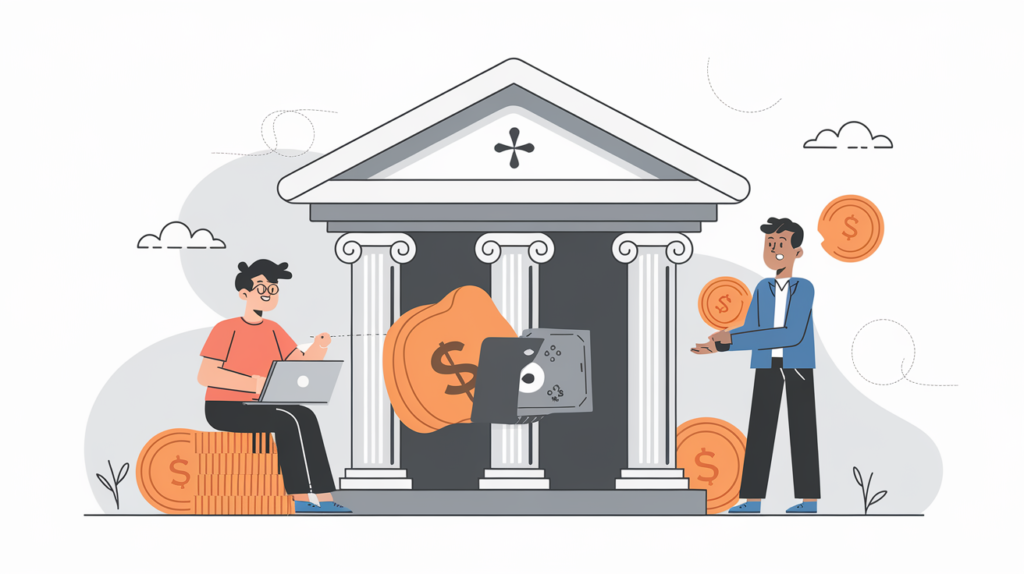
What to Keep in a Safe Deposit Box
A secure storage unit is ideal for protecting your most important possessions, but knowing what to store—and what to avoid—can make all the difference. Here’s a breakdown of the essentials and items that should never be placed inside.
Essential Items:
- Documents: Property deeds, wills, birth certificates, marriage licenses, and insurance policies.
- Jewelry: Precious rings, necklaces, watches, and family heirlooms.
- Cash and Valuables: Emergency funds, rare coins, or small precious metals.
- Digital Backups: USB drives or external hard drives containing critical data.
Items to Avoid:
- Illegal Items: Anything prohibited by law, such as unregistered firearms or illicit substances.
- Perishables: Food, plants, or other items that could decay or attract pests.
- Irreplaceable Originals: While copies of documents are fine, avoid storing the only version of something you might need urgently.
- Everyday Items: Things you need frequent access to, like passports or medical records, unless duplicates are available.
By focusing on essential items and avoiding prohibited or impractical ones, you can ensure your storage unit remains a reliable and secure solution for your valuables. This approach helps you maximize its utility while staying compliant with regulations.
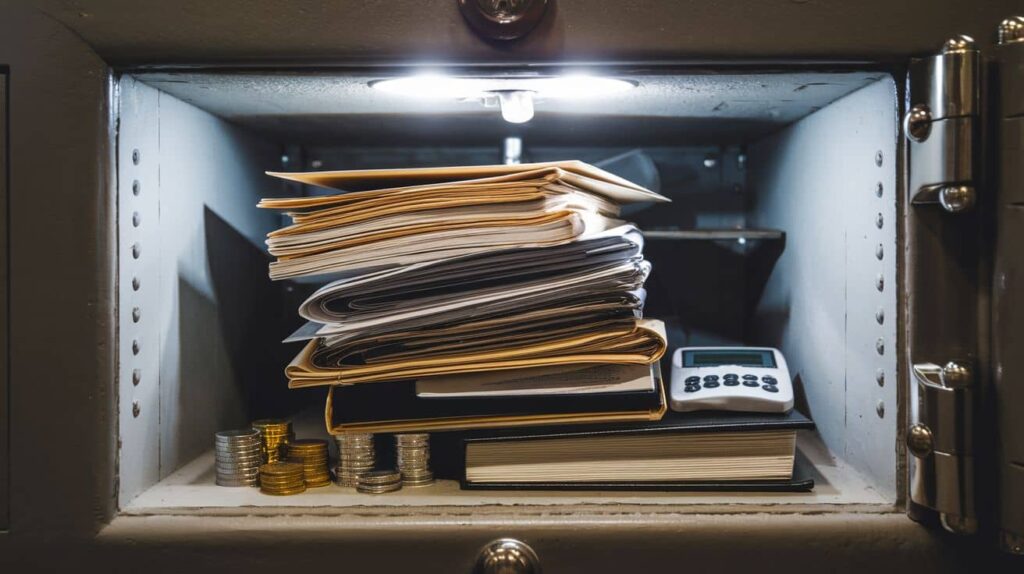
Safe Deposit Box Prices: How Size Affects Cost
The cost of renting a secure storage unit varies significantly based on its dimensions, with larger containers naturally commanding higher prices. Understanding the average rates and potential additional fees can help you budget effectively and avoid surprises.
Average Costs for Small, Medium, and Large Units:
- Small Units (3” x 5” x 24”): Typically range from 20to50 annually.
- Medium Units (5” x 10” x 24”): Usually cost between 50and100 per year.
- Large Units (10” x 10” x 24”): Often priced between 100and200 annually.
Additional Fees to Watch Out For:
- Key Replacement Fees: Charged if you lose access to your unit.
- Late Payment Penalties: Incurred if rental fees aren’t paid on time.
- Drilling Fees: Applied if the lock needs to be forcibly opened due to lost keys or other issues.
- Insurance Costs: Optional coverage for the contents of your container, which may not be included in the rental price.
While larger units offer more space, they also come with higher costs. Be sure to factor in potential additional fees when budgeting for your storage needs. By understanding the pricing structure, you can make an informed decision that balances affordability with the level of security you require.
Private Safe Deposit Boxes vs. Bank Options
When choosing a secure storage solution, you’ll often have two main options: private providers or traditional banks. Each has its own advantages and limitations, particularly when it comes to size flexibility and accessibility.
Differences Between Private and Bank-Owned Units:
- Private Providers: These companies specialize in secure storage and often offer more modern facilities with advanced security features like biometric access and climate control. They may also provide 24/7 access, which banks typically do not.
- Bank-Owned Units: Banks have long been the traditional choice for secure storage. They are often located within branch locations, offering convenience for customers who already use their services. However, access is usually limited to banking hours.
Which Option Offers Better Size Flexibility?
- Private Providers: These companies often have a wider range of sizes, including custom options, to accommodate unique storage needs. They are more likely to offer mini or oversized units for specialized items.
- Bank-Owned Units: Banks tend to offer standard sizes, which may limit your options if you need something particularly small or large. Availability can also vary depending on the branch.
If size flexibility and extended access are priorities, private providers may be the better choice. However, if you prefer the convenience of a trusted financial institution and don’t require non-standard sizes, a bank-owned unit could be sufficient. Weighing these factors will help you select the best option for your needs.
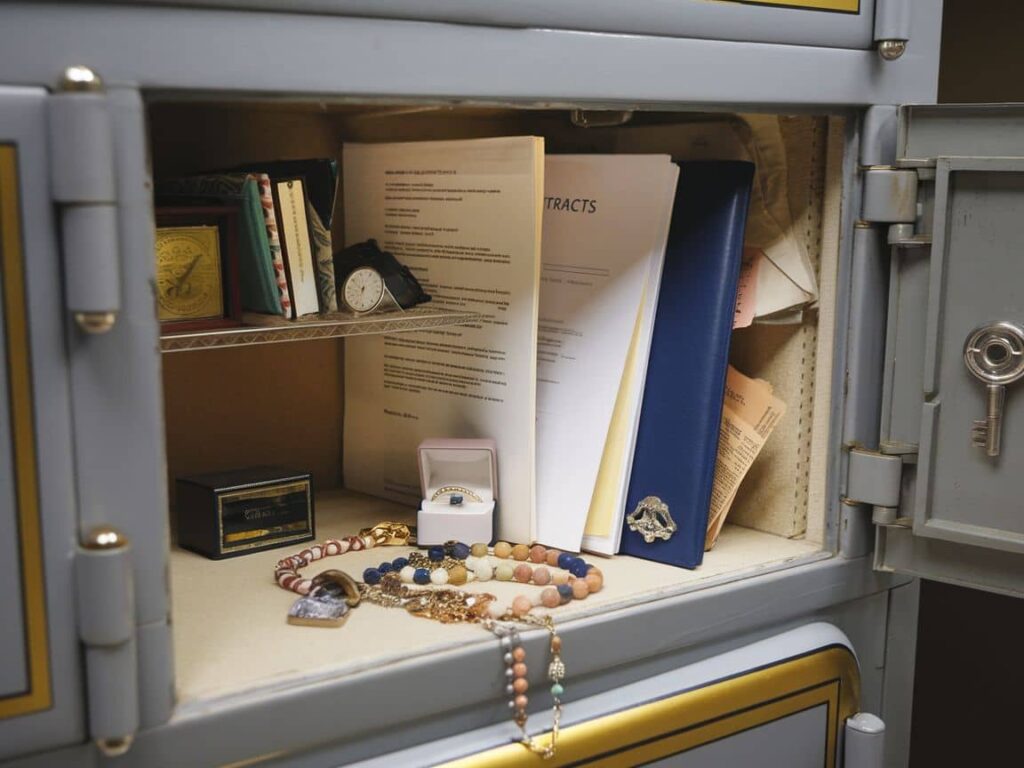
How to Get a Safe Deposit Box: A Step-by-Step Guide
Securing a storage unit for your valuables is a straightforward process, but it requires careful planning and preparation. Here’s a step-by-step guide to help you navigate the rental process with ease.
Researching Local Banks and Private Providers:
- Compare Options: Look into nearby banks and specialized storage companies to compare prices, sizes, and features.
- Read Reviews: Check customer feedback to gauge reliability and service quality.
- Visit Facilities: If possible, tour the locations to assess security measures and accessibility.
Required Documents and Identification:
- Proof of Identity: A government-issued ID, such as a driver’s license or passport.
- Proof of Address: Utility bills or bank statements to verify your residence.
- Additional Documentation: Some providers may require a secondary form of ID or a reference.
The Rental Process Explained:
- Choose a Provider: Select a bank or private company that meets your needs.
- Select a Size: Pick a unit that fits your valuables based on your measurements.
- Complete Paperwork: Fill out the rental agreement and provide the necessary documents.
- Pay Fees: Cover the initial rental cost and any additional charges, such as a key deposit.
- Access Your Unit: Receive your keys or access codes and familiarize yourself with the facility’s policies.
By following these steps, you can secure a storage unit that offers the right balance of security, convenience, and affordability for your valuables.
Tips for Organizing Your Safe Deposit Box
Keeping your storage unit well-organized ensures easy access to your valuables and maximizes the available space. Here are some practical tips to help you categorize and store items efficiently.
How to Categorize and Store Items Efficiently:
- Group Similar Items Together: Keep documents, jewelry, and collectibles in separate sections for quick retrieval.
- Prioritize Accessibility: Place frequently needed items near the front and rarely accessed ones toward the back.
- Create an Inventory List: Maintain a detailed list of everything stored, including descriptions and locations.
Using Dividers, Envelopes, and Containers for Better Organization:
- Dividers: Use small dividers or trays to separate jewelry, coins, or other small items.
- Envelopes: Store documents in labeled envelopes or folders to keep them flat and protected.
- Containers: Place fragile or loose items in small, stackable boxes to prevent damage.
- Labels: Clearly mark all containers and envelopes for easy identification.
By implementing these strategies, you can transform your storage unit into a well-organized space that keeps your valuables secure and easily accessible. A little effort upfront can save you time and stress in the long run.
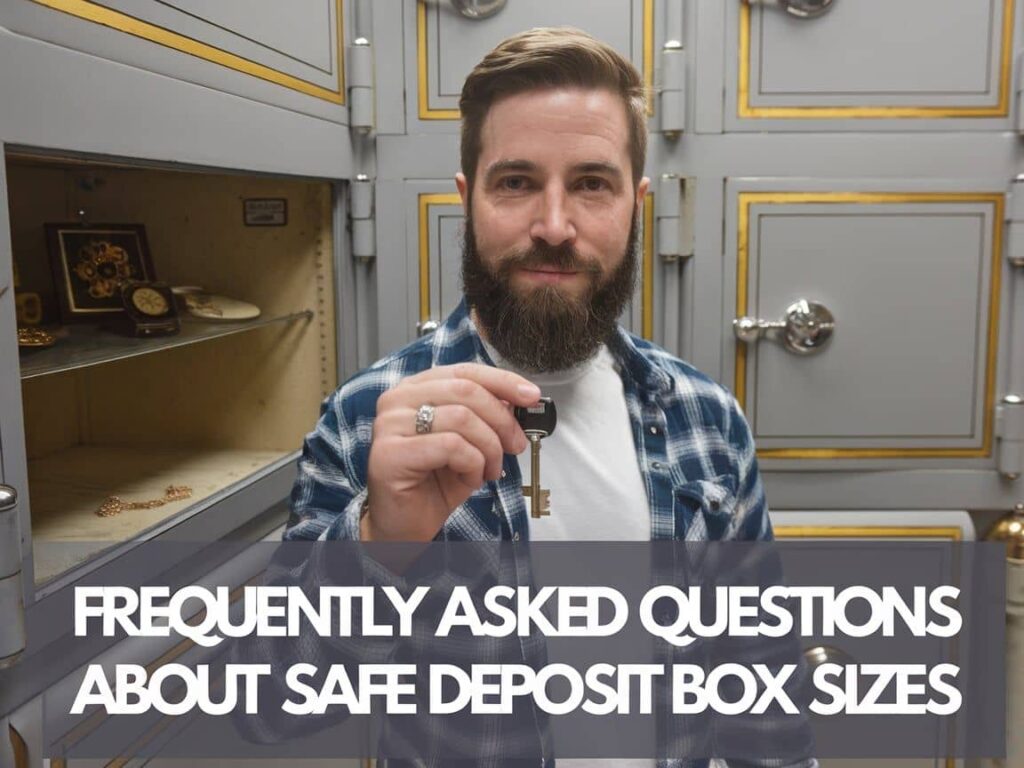
Security Features to Look for in a Safe Deposit Box
When selecting a storage solution for your valuables, security should be a top priority. Here are key features to consider that ensure your items are protected from both physical threats and environmental damage.
Fireproof and Waterproof Options:
- Fireproof Units: Look for containers designed to withstand high temperatures, protecting contents from fire damage.
- Waterproof Seals: Ensure the unit has water-resistant features to guard against flooding or moisture.
- Climate Control: Some facilities offer climate-controlled environments to prevent humidity-related damage.
Advanced Locking Mechanisms and Access Controls:
- Dual-Key Systems: Require both your key and the facility’s master key to open the unit.
- Biometric Access: Use fingerprint or retinal scanning for enhanced security.
- Electronic Locks: Offer customizable access codes and audit trails for added protection.
- 24/7 Surveillance: Choose facilities with round-the-clock monitoring and alarm systems.
By prioritizing these security features, you can ensure your valuables are safeguarded against theft, fire, water damage, and unauthorized access. Investing in a well-protected storage solution provides peace of mind and long-term security for your most important items.
Frequently Asked Questions About Safe Deposit Box Sizes
Choosing the right storage unit can raise several questions, especially when it comes to flexibility and limitations. Here are answers to some common queries to help you make an informed decision.
Can I Upgrade or Downgrade My Box Size Later?
- Upgrading: Many providers allow you to switch to a larger unit if your needs change, though availability may vary.
- Downgrading: Similarly, you can often move to a smaller container if you no longer require the extra space.
- Process: Contact your provider to discuss options and any associated fees for changing sizes.
What Happens If My Items Don’t Fit?
- Overflow Solutions: If your belongings exceed the unit’s capacity, you may need to rent an additional container or upgrade to a larger size.
- Reorganization: Sometimes, better organization or using space-saving tools can help fit more items.
- Plan Ahead: Measure your valuables carefully before renting to avoid this issue.
Are There Weight Limits for Safe Deposit Boxes?
- Standard Limits: Most units have weight restrictions to ensure safe handling and storage. These limits vary by provider.
- Heavy Items: If you plan to store dense objects like gold bars or metal collectibles, confirm the weight allowance with your provider.
- Distribution: Distribute weight evenly to avoid straining the container or its mechanisms.
Understanding these FAQs can help you navigate the rental process more effectively, ensuring your storage solution meets your needs without unexpected complications.

Alternatives to Safe Deposit Boxes
While secure storage units are a popular choice, they aren’t the only option for protecting your valuables. Here’s a look at two common alternatives and their advantages and drawbacks.
Home Safes: Pros and Cons
Pros:
- Convenience: Easily accessible at any time without needing to visit a facility.
- Customization: Available in various sizes and security levels to suit your needs.
- No Rental Fees: A one-time purchase eliminates ongoing costs.
Cons:
- Limited Protection: Vulnerable to theft, fire, or water damage unless you invest in high-end models.
- Space Constraints: Requires dedicated space in your home, which may not be feasible for everyone.
- Maintenance: You’re responsible for upkeep and repairs.
Digital Storage Options for Documents
Pros:
- Space-Saving: Eliminates the need for physical storage of paperwork.
- Backup Options: Cloud services often include automatic backups for added security.
Cons:
- Dependence on Technology: Requires reliable internet and devices for access.
- Limited Use: Not suitable for physical items like jewelry or collectibles.
Both home safes and digital storage offer unique benefits, but they also come with limitations. Consider your specific needs and the types of items you’re protecting to determine the best solution for you.
Real-Life Examples: What Fits in Each Box Size
Understanding the practical applications of different storage unit sizes can help you visualize how they might meet your needs. Here are some real-life examples and visual insights into what fits in small, medium, and large containers.
Case Studies of Small, Medium, and Large Unit Users
- Small Unit User: Sarah, a frequent traveler, uses a 3” x 5” x 24” container to store her passport, emergency cash, and a few pieces of heirloom jewelry. Its compact size is perfect for her minimal storage needs.
- Medium Unit User: The Martinez family rents a 5” x 10” x 24” space to keep their property deeds, insurance policies, and a small collection of vintage coins. The extra room allows them to organize everything neatly.
- Large Unit User: James, an avid collector, uses a 10” x 10” x 24” unit to house his rare comic books, photo albums, and family keepsakes. The spacious interior accommodates his growing collection.
Visual Examples of Items Stored in Each Size
- Small Unit: A stack of documents, a jewelry box.
- Medium Unit: Folders of paperwork, a small lockbox of coins, and a couple of photo albums are neatly arranged.
- Large Unit: Multiple photo albums, a vintage camera collection, and several boxes of memorabilia fill the space comfortably.
These examples illustrate how different sizes cater to varying storage needs, helping you choose the right option for your valuables. Visualizing the capacity of each unit ensures you select one that fits your requirements perfectly.
How to Choose the Right Bank or Provider for Your Needs
Selecting the right facility for your storage needs involves careful consideration of several factors. Here’s what to keep in mind and the questions to ask before making your decision.
Factors to Consider: Location, Accessibility, and Reputation
- Location: Choose a facility that’s conveniently located, whether near your home or workplace, for easy access.
- Accessibility: Check the operating hours and whether the provider offers 24/7 access if needed.
- Reputation: Research reviews and ratings to ensure the provider is trustworthy and reliable.
Questions to Ask Before Renting a Box:
- What security measures are in place? Inquire about surveillance, alarms, and access controls.
- Are there additional fees? Ask about key replacement, late payment penalties, or insurance costs.
- What happens if I lose my key? Understand the process and fees for regaining access.
- Can I change my unit size later? Confirm if upgrades or downgrades are possible.
- Is the facility insured? Ensure the provider offers adequate coverage for stored items.
By evaluating these factors and asking the right questions, you can choose a provider that offers the security, convenience, and flexibility you need for your valuables. Taking the time to research ensures you make a confident and informed decision.




